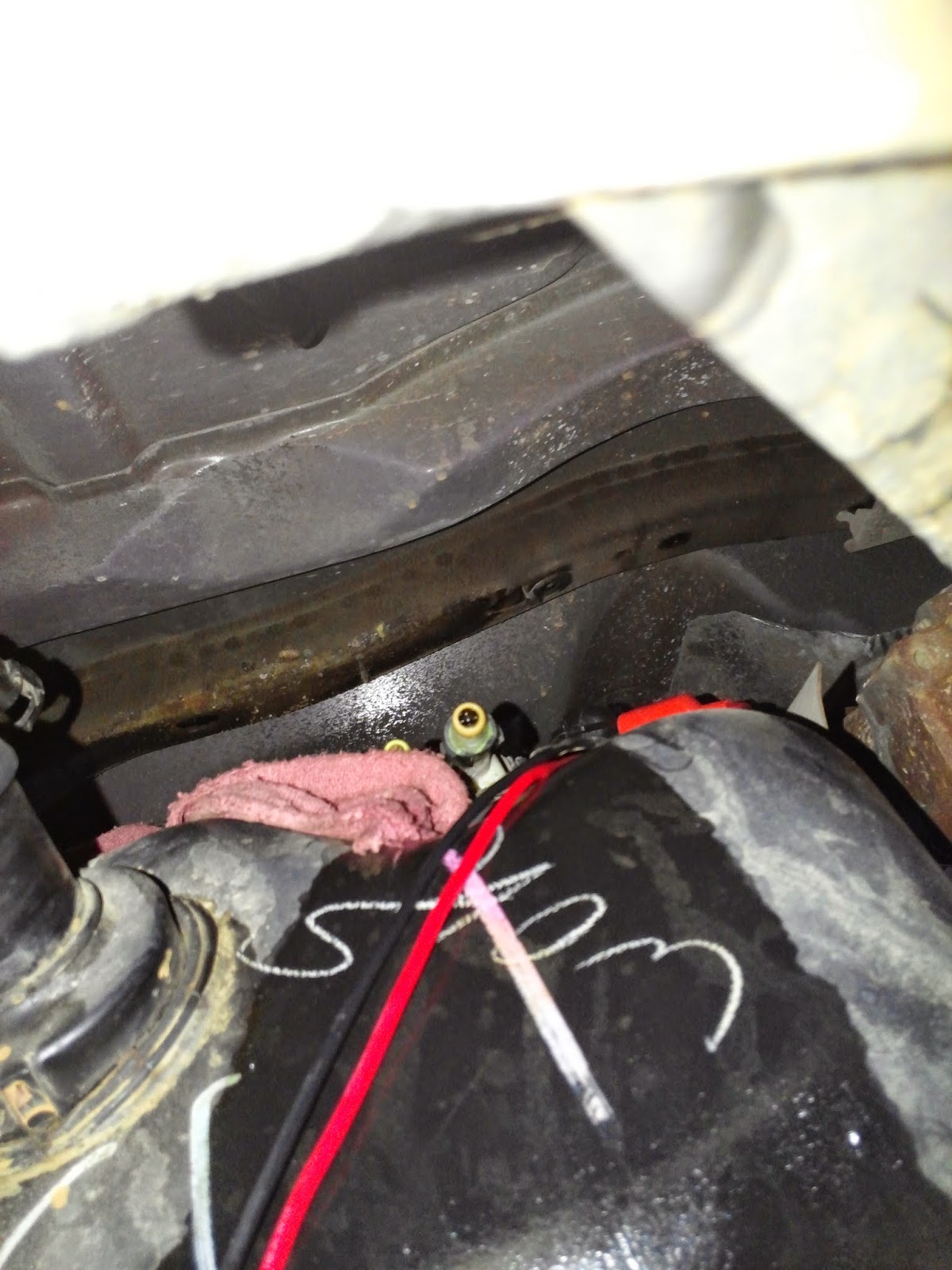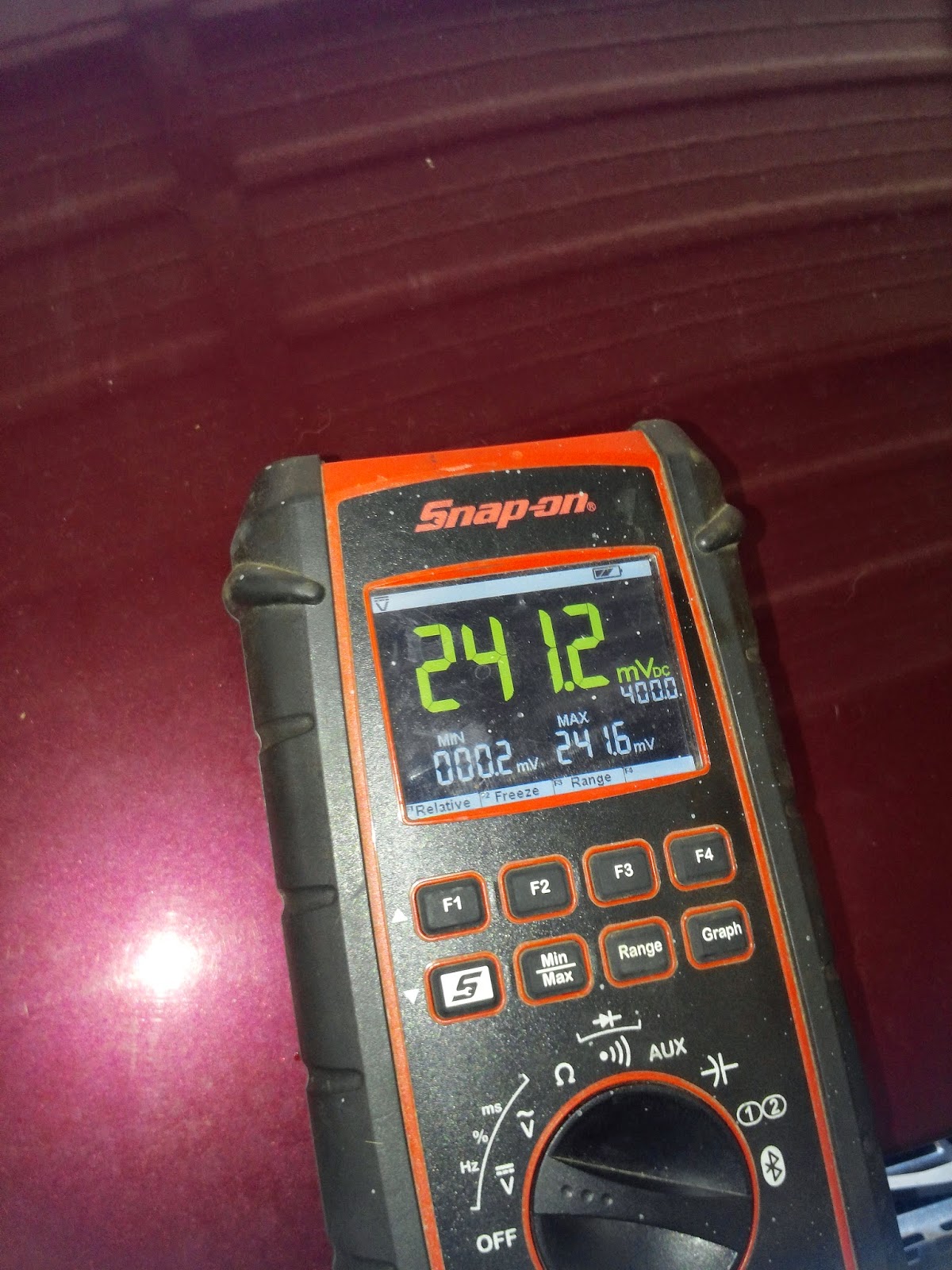A site that deals with automotive drivability, electrical, and general repair problems. Diagnostic procedures, DTC's, wiring diagrams, and many other issues and techniques will be shown and discussed. Hope you enjoy!
Wednesday, September 3, 2014
2001 GMC Jimmy 4.3, No Power on Acceleration, Fuel Delivery Problem
(This is not the actual vehicle we worked on. We did not get a picture of it, so we are just showing a comparable one. The one pictured is a 1999 GMC Jimmy from http://www.edmunds.com/gmc/jimmy/1999/.)
***This entry will not be so much a "how-to" as it will be a teaching point about testing a fuel pump's circuits before removing it from the tank. Therefore, there will not be as many pics in this post. We will simply discuss what we did and then focus on the test, with a couple of pics to go with it.***
This vehicle came into the shop with a customer concern of no power on acceleration. The customer described the symptoms as bogging when pressing the accelerator. The customer believed the fuel filter could have been the issue.
We drove the vehicle and verified the customer's concern. There was a definite issue with fuel delivery. We checked the readings on the Scan data and found the O2 sensors were reading lean at WOT (i.e. Wide Open Throttle). At WOT, with proper fuel pressure and volume, the O2 sensors should peg out Rich. In this case, they did the opposite, they dropped to 0mv, indicating a fuel delivery issue.
We put a fuel gauge on the vehicle and got a reading of around 50psi. This vehicle's spec is 60psi and up.
We removed the fuel filter first and sure enough, it was completely clogged. Per the customer's request, we changed the filter first and test drove the vehicle again. As we assumed, the vehicle had the same symptoms.
It was now time to drop the tank and take a look at the fuel pump. The filter was an obvious issue. It was stopped up due to a lack of proper maintenance.
The pump probably failed because of the poor shape of the filter. The pump had to pump against that resistance and simply wore out because of it.
One mistake that we have seen committed over and over, is having a faulty fuel pump and then simply jerking it out and putting a new one in the vehicle. There is a simple test that needs to be performed before removing the old pump.
That test is called a voltage drop test. Basically, with this test, the tech is testing the power side circuit and the ground side circuit to make sure everything is good. A problem with either of these circuits can cause the same symptoms a bad pump will display.
If there is a problem in one of the circuits, even though the pump probably will need to be replaced, if the tech simply puts a new pump in the vehicle, it will not be long until that pump is faulty too.
We have seen, and heard, of many such cases where a pump is replaced, only to have the new pump go out within a few weeks or months of installation. The issue, almost every time, was not a faulty new pump (though that does happen); but rather, an issue with the circuitry.
The issue is that resistance builds up in one side of the circuit or other and causes the pump to fail prematurely. If the test is done and too much resistance is found, the tech then has to divide the circuit and start searching for the problem area.
We won't give a detailed definition here of voltage drop, it can be found easily online.
Before removing the original pump, here is the test we performed to check the voltage drop. The picture below is where we back probed at the fuel pump electrical connector.
We took a DVOM meter and connected one end to the battery and the other to the fuel pump electrical connector. We tested the power side first and then the ground side.
What we were looking for is a reading under about .5v or 500mv. As long as the reading is below half a volt, the circuit is good and the pump can be replaced with no worries. (The test must be performed with the pump running.)
First we test the power side. In the picture below you will see the reading is well below 500mv.
This test told us our power feed was good. We then moved to the ground side. As you see in the picture below, it too was below the 500mv threshold.
This test took 5-10 minutes. In that short time, we tested and found the power feed and the ground circuits to be in good electrical shape.
We were then confident to R&R the original pump, retest the pressure, take it for a test drive and ship it to the customer.
Taking the time to do the little things right, will help to prevent costly and unwanted returns. It makes the tech's life simpler and happier and the customer's too!
Labels:
2001 GMC Jimmy 4.3,
bogging,
circuit,
circuitry,
DVOM,
fuel delivery issue,
fuel filter,
Fuel Pump,
hesitation,
no power on acceleration,
resistance,
smothering,
Voltage Drop,
voltage drop test
Subscribe to:
Posts (Atom)



